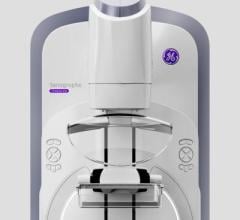June 27, 2016 — A new phase 1 clinical trial from Brigham and Women's Hospital published in Radiology on June 22 evaluated the differences between pre-operative prone and supine magnetic resonance imaging (MRI) exams in 12 women undergoing lumpectomy for breast cancer. Researchers demonstrated that considerable deformity of the breast and tumor position occurs when patients are imaged in the prone position.
MRI has been used as an effective tool for cancer evaluation and has been found to be highly sensitive in detecting breast tumors, but there is no evidence that pre-operative MRI translates into improved outcomes following breast conserving surgery. Traditionally, patients who are scheduled to undergo breast-conserving lumpectomy for breast cancer undergo a breast MRI prior to surgery to help inform the surgeon about the size, shape and location of the tumor. These MRIs are performed with the patient lying prone, or face down, while the surgery is performed with the patient lying supine, face up.
"Accounting for change in size and shape caused by displacement and deformation of the tumor between standard imaging in the prone position and operative supine position, our analysis highlights that supine MRI before surgery may provide surgeons with more detailed and accurate information and could lead to effective tumor removal," stated Eva C. Gombos, M.D., radiologist at BWH and lead author of the study.
"Supine MRI, when performed in addition to standard prone breast MRI, may help detect a remnant tumor and ensure clear margins to prevent re-operation. Among women undergoing breast conserving surgery, 15-40 percent need to have a second operation to remove remnant tumor," said senior author Mehra Golshan, M.D., distinguished chair in surgical oncology at BWH.
Between April 2012 and December 2014, a total of 15 women were enrolled in the trial in the Advanced Multi-Modality Image Guided Operating Suite (AMIGO) at BWH, an operating room and interventional suite facility with a full array of imaging modalities for use during surgical procedures, designated as the Center for Image Guided Therapeutics by the National Cancer Institute. All images and information relevant to the procedure are accessible in the operating suite, allowing radiologists and surgeons to continuously view relevant imaging data. Integration of intra-operative MRI for breast lumpectomy was developed by the late Ferenc A. Jolesz, M.D., former director of the MRI Division, and the Image-Guided Therapy Program at BWH.
Patients in the study underwent standard diagnostic MRI in the usual prone position as an outpatient preceding surgery. Twelve patients underwent lumpectomy and post-surgical supine MRI during the operation. Half had pre-procedure supine imaging. Researchers measured differences found in size, position and shape of tumor between prone and supine imaging. Researchers found that specifications of the tumor, including size and location in the breast, were substantially different depending on the position of the woman when she had her MRI. All patients underwent successful removal of their tumor with clear margins for invasive breast cancer.
"If validated in future large studies, intra-operative, and, more importantly, pre-operative supine MRI could be expected to help the surgeon in accurately planning removal of the tumor and reducing the need for re-operation which negatively impacts the patient emotionally, delays post-operative therapy and increases infection rates and cost," stated Gombos.
This study was supported by the National Center for Research Resources and the National Institute of Biomedical Imaging and Bioengineering of the National Institutes of Health.
For more information: www.pubs.rsna.org/journal/radiology


 July 09, 2025
July 09, 2025 








